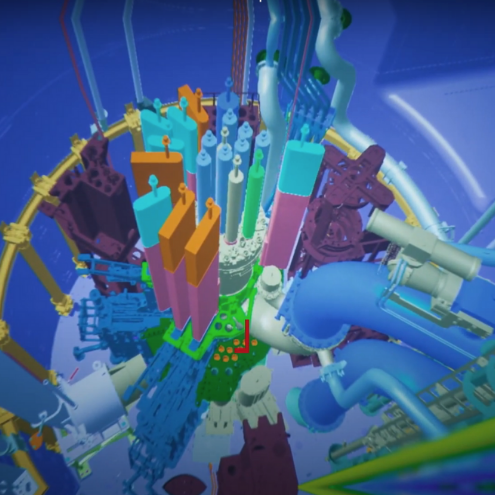
Experimental devices

The Jules Horowitz research reactor (JHR) provides a unique environment in which innovative tests can be performed simultaneously. The building is divided into two areas with different reactor containment systems:
The first area is known as the reactor building (BR) and it is also divided into two sections:
- The first section houses the nuclear reactor and its primary cooling system.
- The second houses the experimentation devices associated with the reactor. This section hosts the different test loops specially designed to meet the needs of all the partner projects.
The fission products laboratory will also be situated in this section so it can be connected up to the loops studying nuclear fuels.
The second area is known as the nuclear auxiliary building building (BAN) in which the laboratories, storage ponds and the hot cells are housed. The latter are shielded containments in which radioactive components and materials are handled, and where non-destructive measurements are performed on fuels samples and materials.
The teams at IRESNE are continuing to develop the experimental devices for the future reactor. We compiled the different technical specifications that must take account of the test devices and non-destructive test benches needed to meet the experimental requirements. These technical specifications were then validated through a series of feasibility studies.
Qualitative studies are ensured through the development of innovative nuclear instrumentation that will equip the future experimental devices installed in the JHR.